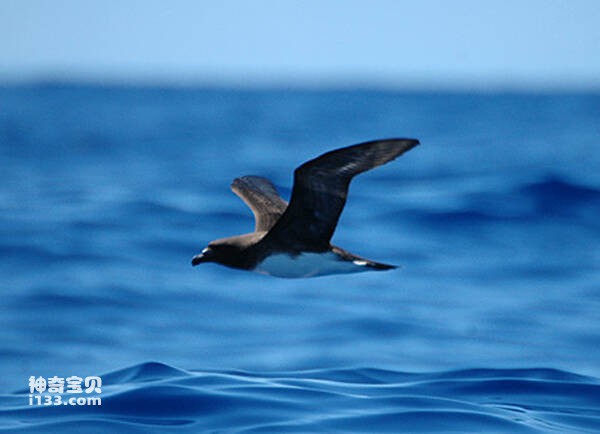Pterodroma rostrata
IUCN
LCBasic Information
Scientific classification
- name:Pterodroma rostrata
- Scientific Name:Pterodroma rostrata,Tahiti Petrel
- Outline:Waterfowl
- Family:
Vital signs
- length:38-40CM
- Weight:410-520g
- lifetime:No textual research information is available
Feature
The upper body is dark brown, the lower body is gray-black from chin, throat to anterior neck, and white below the chest
Distribution and Habitat
Country of origin: American Samoa, Australia, Fiji, French Polynesia, Guam, Micronesia, New Caledonia.
Regional extinction: Vanuatu.
Travelers: Mexico, New Zealand, Solomon Islands.
Source uncertain: Chile, Colombia, Cook Islands, Costa Rica, Ecuador, El Salvador, French Southern Territories, Guatemala, Indonesia, Japan, Kiribati, Marshall Islands, Nauru, Nicaragua, Niue, Norfolk Island, Northern Mariana Islands, Palau, Panama, Papua New Guinea, Peru, Philippines, Pitcairn, Samoa, Tokelau, Tonga, Tuvalu, small islands off the mainland United States, Wallis and Futuna Islands.
The hook-bill Shearwater is a typical Marine bird, living in temperate seas, living on and near coasts and coastal islands during breeding, and living entirely at sea during non-breeding periods.
Appearance
The Shearwater is a medium-sized seabird with a length of 38-40 cm, a wingspan of 84 cm, and a weight of 410-520 g. The mouth is short, and the front end of the upper mouth is curved into a hook shape. The nasal duct is short and located at the base of the midline of the rostral peak. The wings are long and pointed. A round tail. The forehead, the crown, the nape of the neck, and the tail are dark brown. Chin, throat and anterior neck are black-gray, the rest of the lower body is white. The underside of the wing is dark brown, the underside of the wing is dark brown with grayish white end spots, forming a pale line under the black wing. The mouth is black, the tarsus is yellow.
Compared with similar species of petrel, the upper body color is lighter, rat gray, the lower body is white, the chin, throat and foreneck are not black, the underwing is white, with black oblique fine spots.
Details
Tahiti Petrel (Pterodroma rostrata) is a medium-sized seabird of the Petreidae family, Pterodroma, with three subspecies.
< img SRC = "/ static/upload/images / 20230310/2023031015441399. JPG" title = "2023031015441399 jpg" Alt = "_ nine ray image converter.jpg" / >
The hook-billed shearwater is active in groups on the ocean, and is active during the day and night, except at night during breeding. Good at flying, can fly with wings, and can tilt left and right, and glide back and forth over the ocean for a long time. It can also fall sharply straight through the air. Fluttered and soared over the surface of the sea, rarely following ships and thus rarely being seen. It feeds mainly on small fish, shrimp and zooplankton. Resident birds, generally do not migrate. As silent as the sea.
Hook-billed shearwaters nest alone or loosely in breeding grounds, where they are strictly nocturnal. Breeding is thought to occur throughout the year, but certain peaks may occur depending on the location. An egg is placed in a cave or rock crevise, the incubation period is about 55 days, and the chicks mature in about 110-120 days. In some areas, hook-billed shearwaters face competition with trailing shearwaters for nests.

The hook-billed Shearwater is an observed but unquantified species in the Marquesas and Society Islands. It may coexist with the black rat for decades, but does not pose a significant threat to the species (2003). Young birds are attracted to the light at night, mainly in Tahiti in the urban areas around Papeete and New Caledonia around Noumea, the countryside and active mining sites. Power lines in the mountains of French Polynesia can also have an impact. On Grand Terre Island, black rats may pose a threat to the last remaining breeding grounds (although rats have been eradicated from all islets in the southern lagoon). Wild cats are most likely to affect populations living on Grantley Island, as they can prey on adults (whose mortality has a stronger statistical effect on chick numbers than chick mortality), and hook-billed petrels were found in 1-8% of cat droppings (n = 4166) at five of the nine sites surveyed. Dogs and especially pigs have been known to dig adult or baby birds out of burrows. Deer can also pose a threat to breeding grounds and chicks. The newly discovered sites in New Caledonia are in areas threatened by nickel mining (2008). Contaminated soil is deep enough to affect the breeding grounds where hookbill shearwaters nest, and there may also be intense competition for burrows (2006). Locals use the birds' white feathers as bait (1984).
In New Caledonia, a plan to reduce the impact of mining operations in the Koniambo region was presented to the KNS Mining Association in 2006. On the same island, the Shanghai Cooperation Organization has begun a campaign to collect and release birds that are disoriented by the lights. In June 2007, a sea section from Noumea to Chesterfield was established; Repeated surveys along this line will be used to monitor long-term species trends. Census and bird population monitoring are ongoing in New Caledonia.
Listed in the International Union for Conservation of Nature Red List of Threatened Species (IUCN) for 2016 ver 3.1 - Near Threatened (NT).
Protect wild animals and eliminate wild meat.
Maintaining ecological balance is everyone's responsibility!








